How to get rid of warts on hands and feet. Effective Wart Removal: Causes, Types, and Treatment Options for Hands and Feet
What are the different types of warts. How can you effectively remove warts at home. When should you seek professional medical help for wart removal. What are the best prevention methods to avoid wart spread.
Understanding Warts: Types, Causes, and Characteristics
Warts are benign skin growths caused by the human papillomavirus (HPV). They can appear on various parts of the body, including hands, feet, and genitals. Understanding the different types of warts is crucial for effective treatment and prevention.
Common Warts
Common warts typically appear on hands and fingers. They are characterized by:
- Raised, rough-textured bumps
- Flesh-colored or slightly darker appearance
- Possible speckled look due to small blood clots
These warts are easily spread through direct contact, especially when there are small cuts or damages to the skin. Children and individuals with weakened immune systems are more susceptible to common warts.
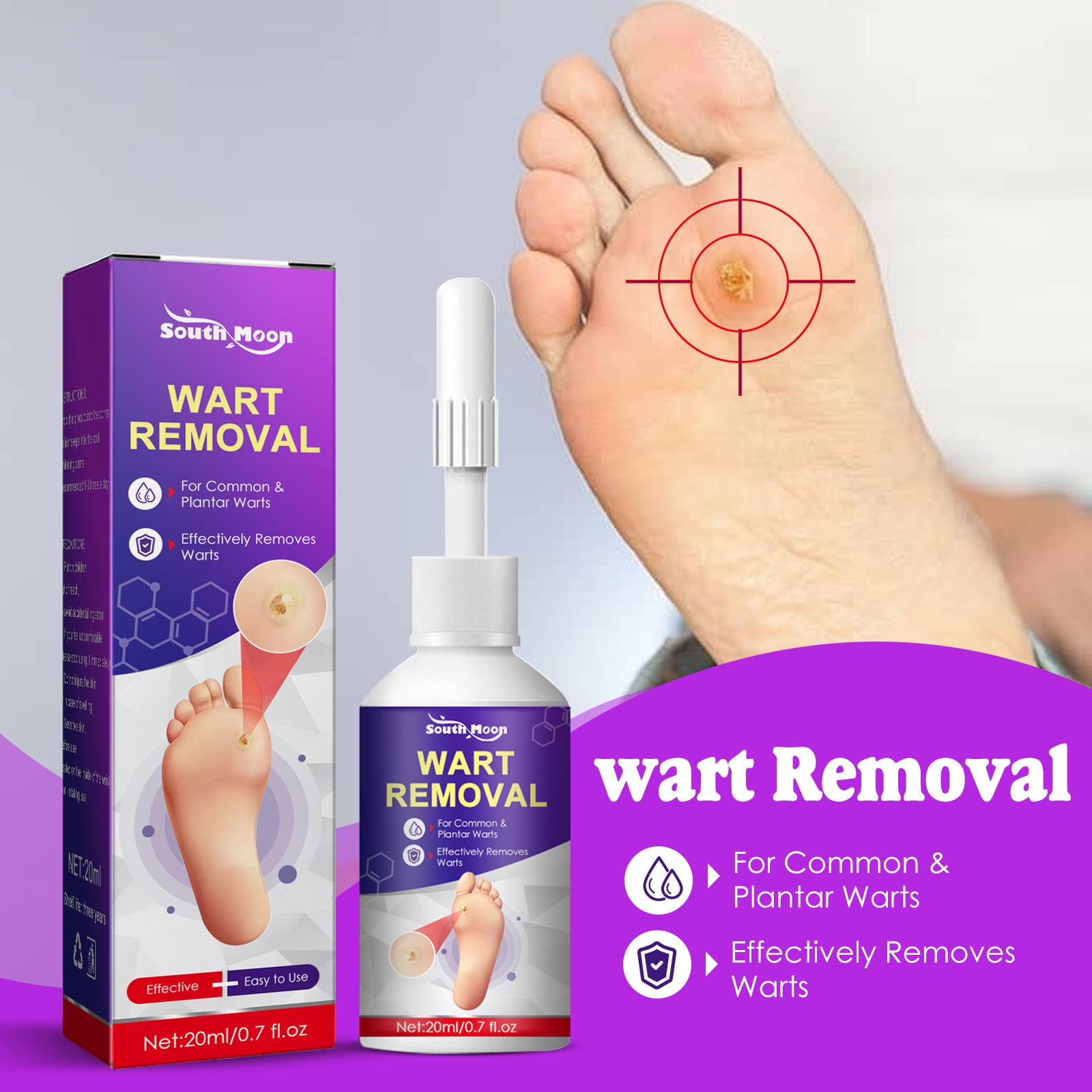
Plantar Warts
Plantar warts grow on the soles of the feet, particularly in weight-bearing areas. They have distinct features:
- Flat appearance due to pressure from walking
- Inward growth pattern
- Hard, thickened skin above the wart
- Often painful or tender when pressure is applied
- Small black dots (blood vessel clots) visible on the surface
Due to their location and potential discomfort, plantar warts often require professional treatment from a dermatologist.
Genital Warts
Genital warts are sexually transmitted and caused by specific strains of HPV. They can appear:
- As single growths or in clusters
- With a cauliflower-like appearance
- Often too small or flat to be visible
- On genitals, groin, mouth, or anus
Genital warts may cause itching, tenderness, pain, or bleeding. It’s crucial to consult a healthcare professional for proper diagnosis and treatment of genital warts.
Home Remedies for Wart Removal
While professional medical treatment is often recommended, there are several home remedies that can be effective for common warts. However, it’s important to note that these methods are not suitable for genital warts.
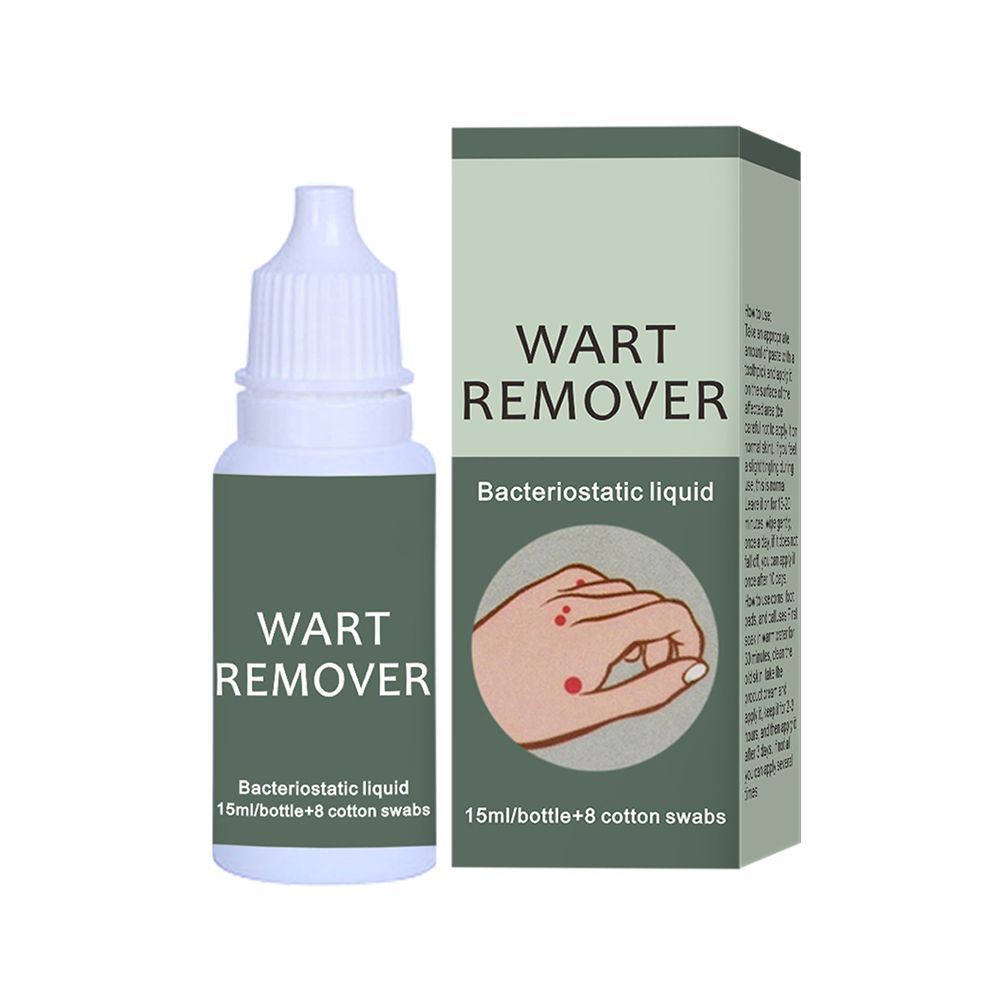
Salicylic Acid Treatment
Salicylic acid is a popular over-the-counter treatment for warts. Here’s how to use it effectively:
- Soak the affected area in warm water
- Apply salicylic acid (gel, liquid, or pad) daily
- File away dead skin with a disposable emery board or pumice stone
- Repeat the process until the wart disappears
Cryotherapy at Home
Over-the-counter wart freeze products use liquid nitrogen to remove warts. These are available as gels or sprays and can be effective for smaller warts.
The Duct Tape Method
Some people find success with the duct tape method:
- Cover the wart with silver duct tape for 6 days
- Soak the area in water and file away dead skin
- Leave the wart exposed for 12 hours
- Repeat the process until the wart is gone
While this method’s effectiveness is debated, some find it helpful for stubborn warts.
Professional Wart Removal Techniques
When home remedies fail or for more complicated cases, professional medical treatments are available. These methods are typically more aggressive and effective.
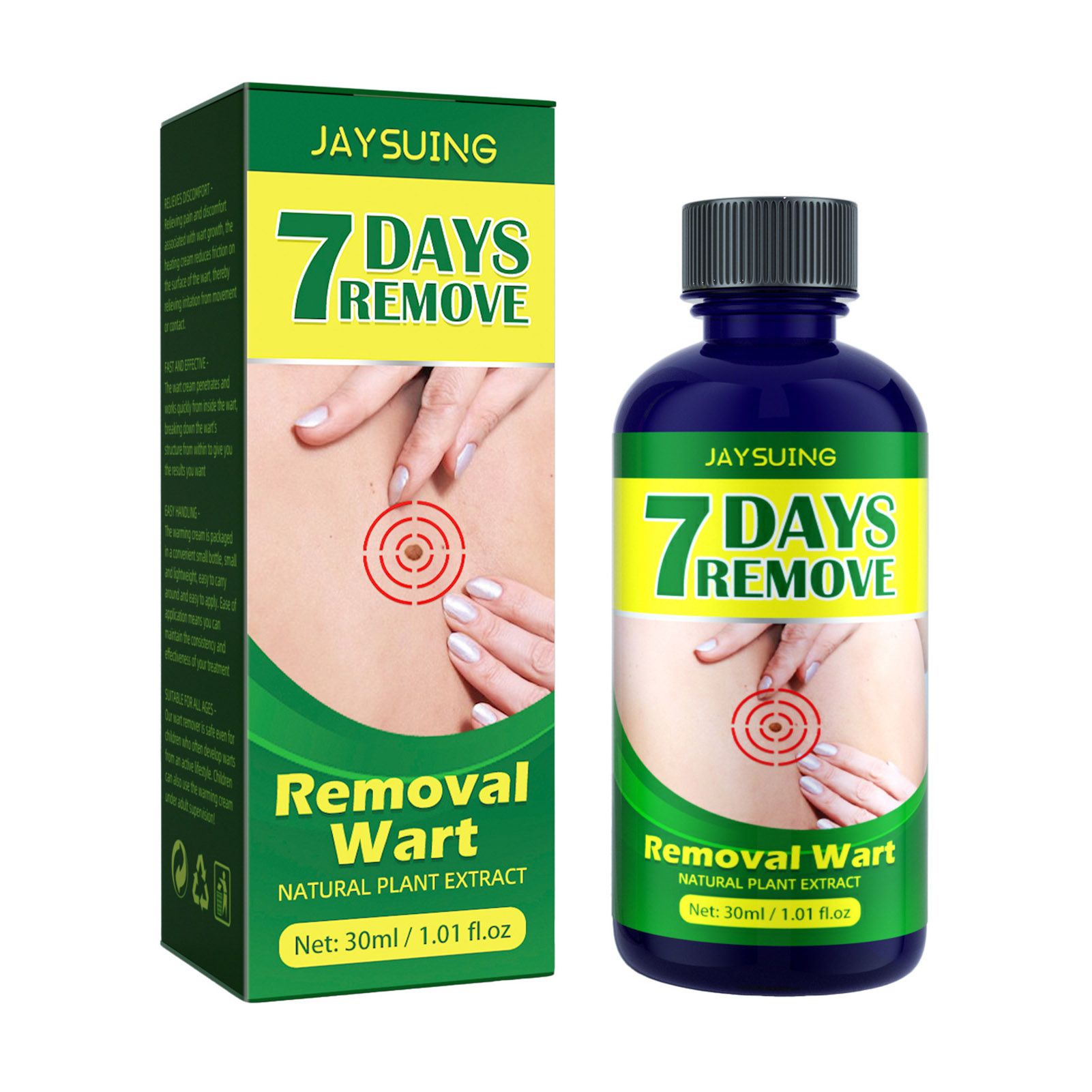
Cryotherapy
Dermatologists use liquid nitrogen to freeze warts, causing them to blister and fall off. This method may require multiple treatments for complete removal.
Electrocautery
This technique involves burning off the wart with an electric current. It’s effective but may leave a small scar.
Laser Treatment
Laser therapy uses intense light to destroy the blood vessels feeding the wart, causing it to die and fall off. This method is particularly useful for resistant warts.
Surgical Excision
For larger or stubborn warts, a doctor may surgically remove them. This method is quick but may leave a scar.
Prevention Strategies to Avoid Wart Spread
Preventing the spread of warts is crucial for both individuals with warts and those trying to avoid them. Here are some effective prevention strategies:
- Cover existing warts to prevent virus spread
- Avoid picking or scratching warts
- Keep hands and feet clean and dry
- Don’t bite your nails
- Wash hands regularly, especially after touching warts
- Wear shoes in public showers and around pools
- Use protection during sexual activity to prevent genital warts
By following these prevention methods, you can significantly reduce the risk of developing new warts or spreading existing ones.
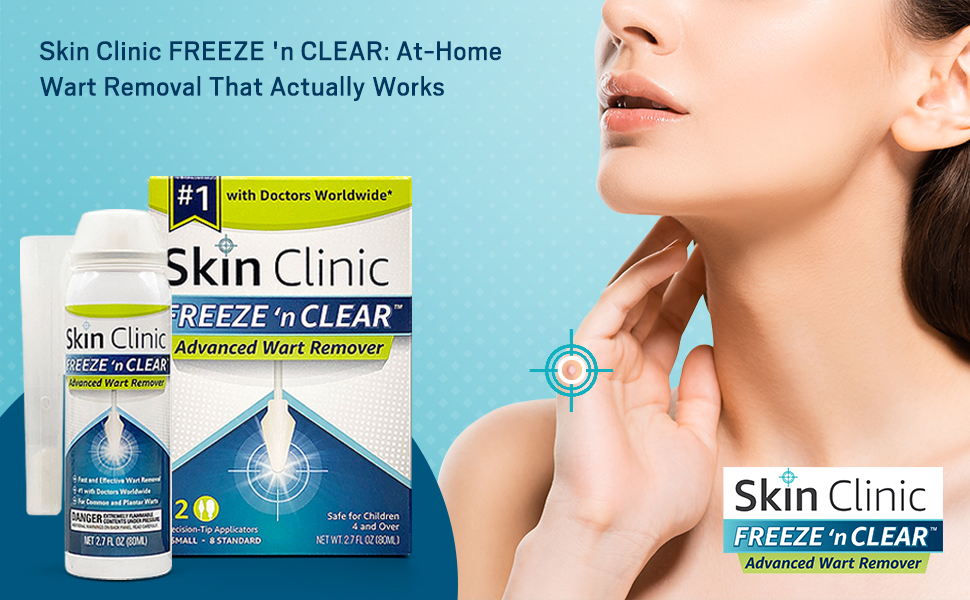
When to Seek Medical Help for Wart Removal
While many warts can be treated at home, there are situations where professional medical help is necessary. Here are some instances when you should consult a doctor:
- Uncertainty about whether a growth is a wart
- Presence of genital warts
- Warts that bleed or cause significant pain
- Warts in sensitive areas like the face
- If you have diabetes or a weakened immune system
- Presence of numerous warts
- Plantar warts causing discomfort
A dermatologist can provide an accurate diagnosis and recommend the most appropriate treatment plan for your specific situation.
The Role of the Immune System in Wart Resolution
The body’s immune system plays a crucial role in fighting off the HPV virus responsible for warts. In many cases, a strong immune system can eliminate warts without any intervention.
Natural Wart Resolution
How long does it take for warts to disappear naturally? The timeline for natural wart resolution varies greatly:
- Common warts may take 6 months to 2 years to resolve
- Plantar warts can persist for several years
- Genital warts may clear within 2 years in 90% of cases
However, waiting for natural resolution isn’t always practical, especially if warts are causing discomfort or spreading.
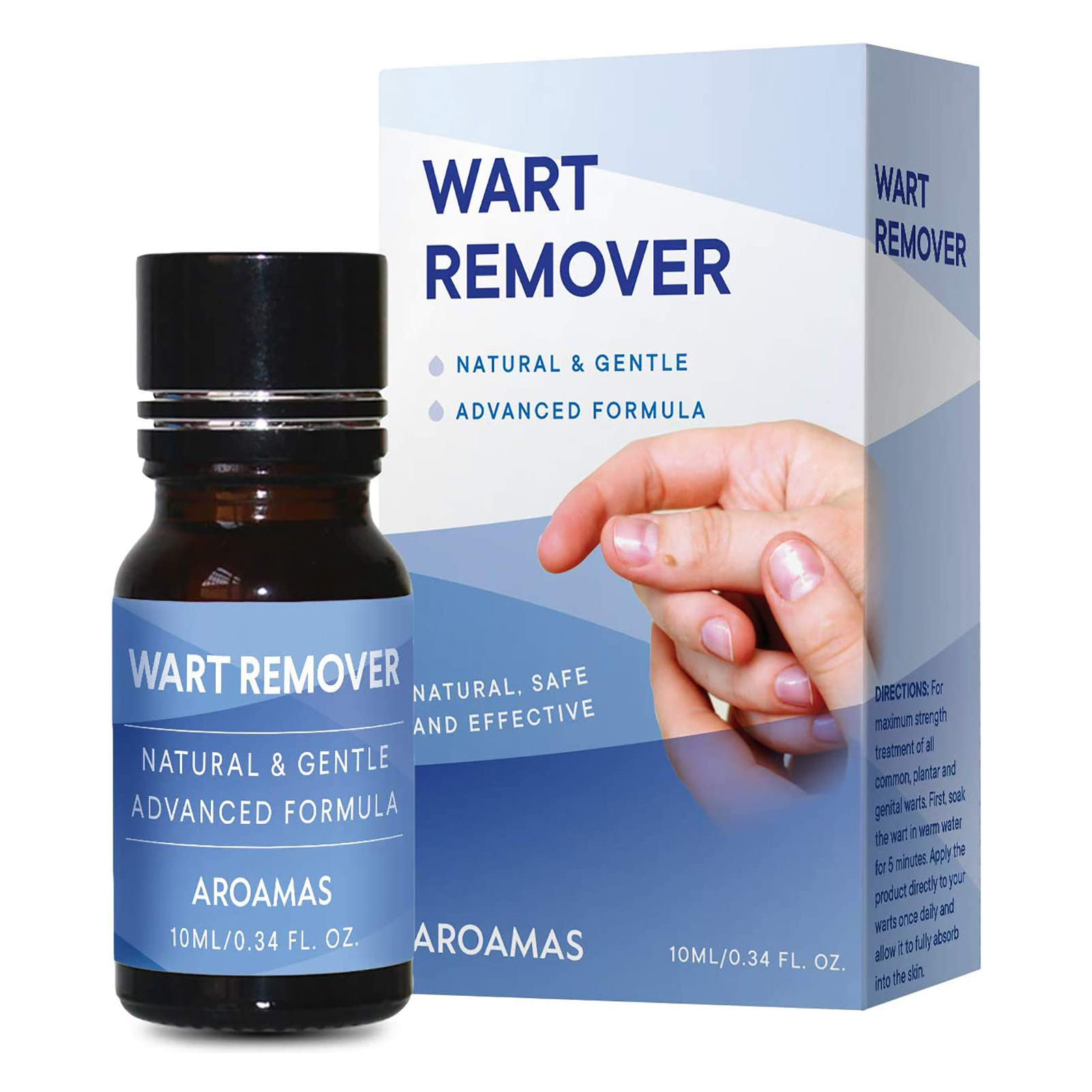
Boosting Immune Response
Some treatments aim to stimulate the immune system to fight warts more effectively. These include:
- Imiquimod cream: Enhances the immune response against HPV
- Cantharidin: A substance that causes blistering, triggering an immune response
- Immunotherapy: Injections to stimulate the immune system against warts
These treatments can be particularly effective for persistent or recurrent warts.
Myths and Misconceptions About Warts
There are several common myths about warts that can lead to misunderstandings about their causes and treatments. Let’s debunk some of these misconceptions:
Myth: Warts are caused by touching frogs or toads
This is a widespread but false belief. Warts are caused by the HPV virus, not by contact with amphibians.
Myth: All warts are contagious
While warts can spread, not all types are equally contagious. Common and plantar warts are more easily transmitted than others.
Myth: Warts have roots that grow deep into the skin
Warts do not have roots. What appears to be a root is actually a collection of dead skin cells and blood vessels.
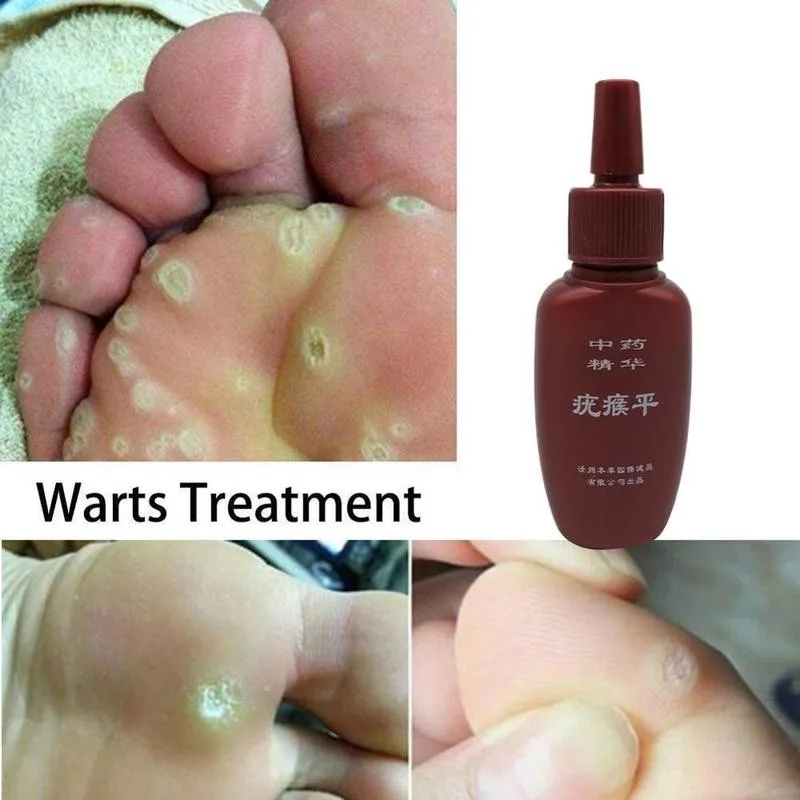
Myth: Cutting off a wart will cure it
Simply cutting off a wart won’t eliminate the virus causing it. Professional medical removal techniques are more effective and safer.
Understanding these facts can help in making informed decisions about wart treatment and prevention.
Long-Term Management and Recurrence Prevention
Even after successful wart removal, there’s a risk of recurrence. Long-term management strategies are crucial for preventing the return of warts.
Post-Treatment Care
After wart removal, proper care of the affected area is essential:
- Keep the area clean and dry
- Apply any prescribed medications as directed
- Avoid picking or scratching the treated area
- Protect the skin from excessive friction or pressure
Monitoring for Recurrence
Regular self-examination is important to catch any signs of wart recurrence early. Pay attention to:
- Any new growths or bumps on the skin
- Changes in skin texture or color at the site of previous warts
- Recurring pain or discomfort in areas where warts were removed
Lifestyle Modifications
Certain lifestyle changes can help reduce the risk of wart recurrence:
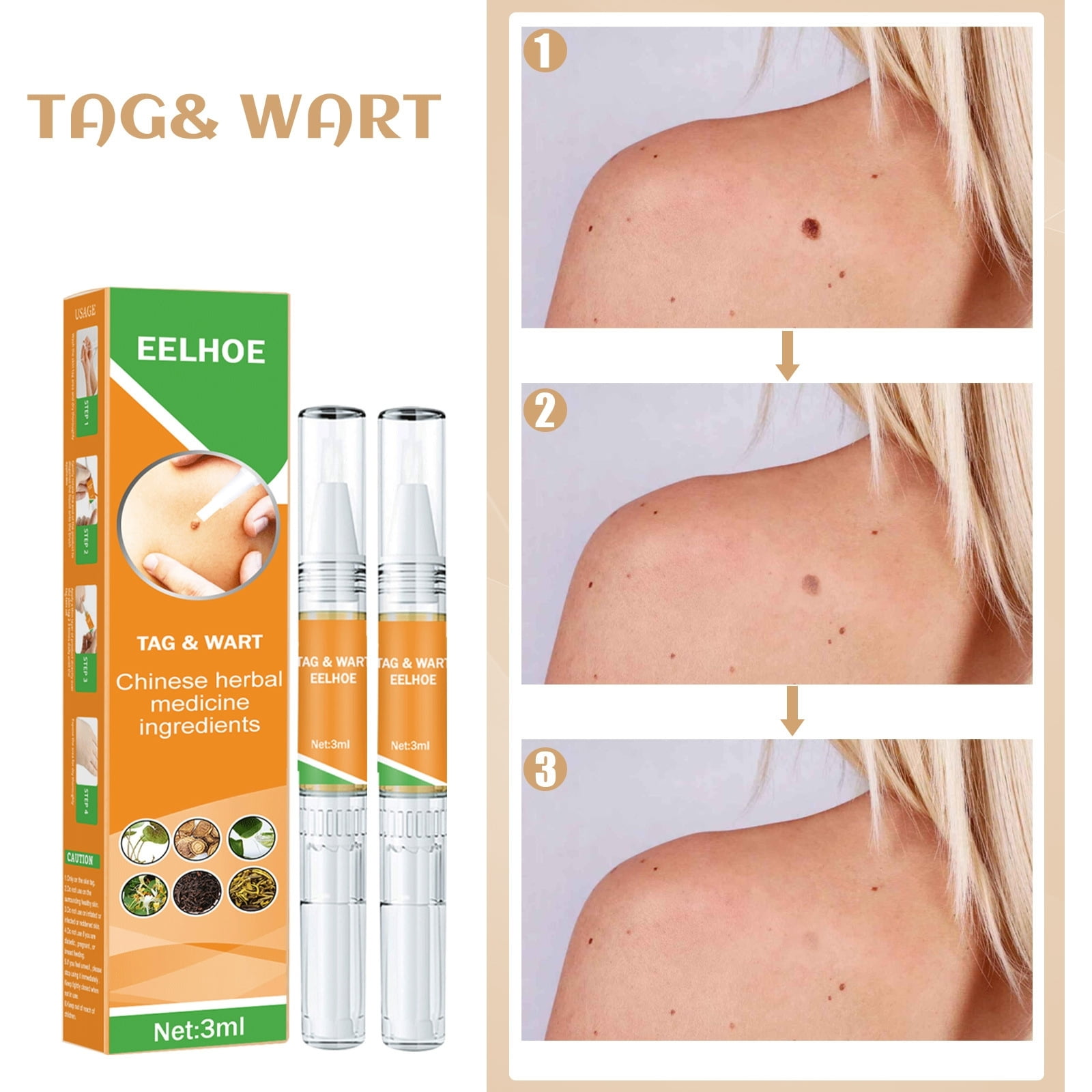
- Maintain good overall health to support immune function
- Practice good hygiene, especially in public spaces
- Avoid walking barefoot in shared spaces like locker rooms or pools
- Use protective gear during sports or activities that may cause skin abrasions
By implementing these long-term strategies, you can significantly reduce the likelihood of wart recurrence and maintain healthier skin.
Understanding the nature of warts, their causes, and effective treatment options is crucial for anyone dealing with these common skin growths. From home remedies to professional medical treatments, there are numerous ways to address warts on hands and feet. Remember, while many warts can be managed at home, it’s important to seek medical advice for persistent, painful, or unusual growths. By combining proper treatment with effective prevention strategies, you can successfully manage warts and maintain healthy skin.
5 Tips for Getting Rid of Warts
Having a wart can be cause for feeling embarrassed and self-conscious, especially as warts on the hand, an area of your body that is hard to cover up. The good news is that warts are easy to remove. Discover 5 tips on how to remove a wart, including home remedies, treatments from a doctor, and tips to prevent the spread of new warts.
What Is a Wart?
There are a few types of warts, which include the common wart, the plantar wart, and genital warts. The common wart is a benign (non cancerous), raised bump on your skin, often rough on the surface and flesh colored. They can also be dark or have a speckled appearance caused by small blood clots in the skin. The common wart is caused by a virus (human papillomavirus or HPV) and is spread by touch. You are more likely to get the virus if you have a cut on or damage to your skin, such as skin broken by a hangnail. Usually, common warts appear on your hands and fingers and are likely to be acquired if you bite your nails, which can damage the skin around your fingers. Children are more likely to get warts because their immune system is still developing. People with compromised immune systems, like those with HIV, also have a higher likelihood of contracting the HPV virus and getting warts.
Plantar warts are caused by the same virus as common warts, but usually grow on the bottom of your feet, especially on the weight-bearing parts of your feet, such as your heel. Plantar warts can grow in clusters and tend to be flat because the pressure on your feet causes the wart to grow inward. You will know they are there by the hard, thickened skin above the wart. They are also often painful or tender, especially when pressure is applied while walking or doing other activities while on your feet. The small black dots (often called “seeds”) that appear on the plantar wart are clots in small blood vessels. It is usually best to seek the help of a dermatologist in plantar wart treatment.
Genital warts are a common, sexually transmitted condition of the HPV virus. Like plantar warts, they can either grow alone or grow in a cluster, often looking like cauliflower. Often though, they are too small and flat to see. In both men and women, they can appear wherever sexual activity has taken place, such as the groin, the mouth, or the anus. In women, they appear on the vulva, vagina, cervix and groin, while in males, they are found on the groin, penis, scrotum and thigh. Genital warts often cause itching, tenderness, pain, or bleeding.
Home Treatments
Typically, if you have a strong immune system, your warts will go away on their own, but it can take a while, especially as warts can spread to other parts of your skin. It is always best to see a dermatologist to get a proper diagnosis and treatment plan for your warts, but there are some things you can do to get rid of your common warts at home. These treatments are not recommended for genital warts, which should be attended to by a dermatologist.
- Salicylic acid: you can get this over-the-counter treatment without a prescription. It will either be in a gel, as a liquid, or on a pad or patch. You will need to apply the acid once a day, and should do so after soaking your wart in warm water. You can get rid of the dead skin that develops on top of the wart by filing the skin with an emery board or pumice stone. Make sure to use disposable emery boards or pumice stones, as re-using them can cause the wart(s) to spread.
- Wart freeze: you can freeze your wart with an over-the-counter product that uses liquid nitrogen as a gel or a spray.
- Duct tape: you may be able to get rid of your wart by covering it with duct tape. The Mayo Clinic recommends covering the wart with silver duct tape for 6 days, soaking it in water and filing away the dead skin, leaving it exposed for 12 hours and then repeating the process until the wart is gone.
- Prevent the spread of new warts: there are many things you can do to prevent getting warts and to prevent new warts from forming.
 These preventative measures include: cover your wart to keep the virus from spreading, don’t pick at your wart, keep your hands and feet clean and dry, don’t bite your nails, wash your hands regularly, wear shoes when in public showers or pools, and use protection during sexual activity.
These preventative measures include: cover your wart to keep the virus from spreading, don’t pick at your wart, keep your hands and feet clean and dry, don’t bite your nails, wash your hands regularly, wear shoes when in public showers or pools, and use protection during sexual activity. - See a doctor: there are a few reasons why you should see a doctor about your wart. If you are at all unsure as to whether the bump is a wart, see a dermatologist — it could be a sign of skin cancer. You should also see a doctor if you have gential warts, if your wart bleeds or is particularly painful, if it is in a sensitive place like your face, if you have diabetes, or if you have a lot of warts. Plantar wart removal is best done by a doctor. Whatever type of wart you have, a dermatologist can treat the wart with a stronger acid than is available to you as an over the counter treatment. They can even perform minor surgery or use a laser to burn the wart off.
Contact Vanguard Dermatology Today
Contact Vanguard Dermatology in the greater New York City area. You can schedule a consultation with an experienced dermatologist to get your wart diagnosed and properly treated.
How to get rid of warts on fingers: Home remedies and treatments
Warts are benign lesions that can develop on the skin or mucous membranes. People can develop warts anywhere on the body, including the fingers, face, scalp, and genitals.
The contagious virus human papillomavirus (HPV) causes warts. Various strains of HPV that can lead to different types of wart.
Some people find that warts disappear without treatment. However, people should see a doctor if they develop warts, as removal may require medical treatment.
In this article, we look at both home remedies and clinical treatments for getting rid of warts on the fingers.
Share on PinterestTreating warts with salicylic acid is an at-home remedy that may help remove warts from fingers.
Although warts sometimes resolve on their own, people may request treatment for warts that cause pain, discomfort, or cosmetic concerns.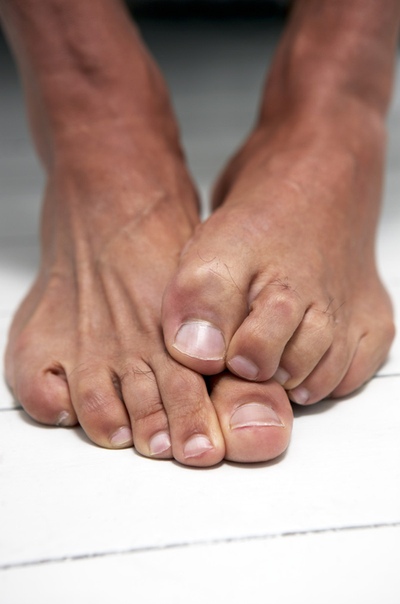
Doctors may recommend home treatments, including over-the-counter (OTC) medications. Some examples are outlined below.
Salicylic acid
People with warts on their fingers can try OTC salicylic acid to treat their warts.
Salicylic acid is a keratolytic agent, meaning it breaks down the cells of the skin. People should only apply salicylic acid directly onto warts, taking care to avoid the surrounding skin.
Doctors and pharmacists sometimes recommend applying a physical barrier to the surrounding skin before applying the salicylic acid to the wart. A popular barrier option is petroleum jelly.
Doctors may also suggest soaking the wart with warm water for 5 minutes before applying the treatment. People can also try filing down any thick skin on the wart with a pumice stone or emery board.
These methods may help the medicine penetrate the layers of skin that contain active HPV.
Salicylic acid is available in many different preparations and concentrations, but according to the American Family Physician (AAFP), most people use a preparation containing 17% salicylic acid.
This dosage is effective and people tend to tolerate it well. However, some people may notice mild irritation at the site of application.
The AAFP indicate that people may need to continue the treatment twice daily for a maximum of 12 weeks.
Imiquimod (Aldara)
Some doctors may prescribe imiquimod (Aldara) cream for treating warts on the fingers. However, the Food and Drug Administration (FDA) have only approved this cream to treat genital and perianal warts.
Duct tape
A 2019 review in Canadian Family Physician describes a treatment for warts in children using duct tape. Estimates suggest this procedure cures about 80% of warts.
Although the evidence for the effectiveness of this method is limited, it is safe to use duct tape, and most people tolerate it well.
According to the Canadian Family Physician, people with warts on their fingers can apply a small piece of duct tape onto the wart once every 4–7 days.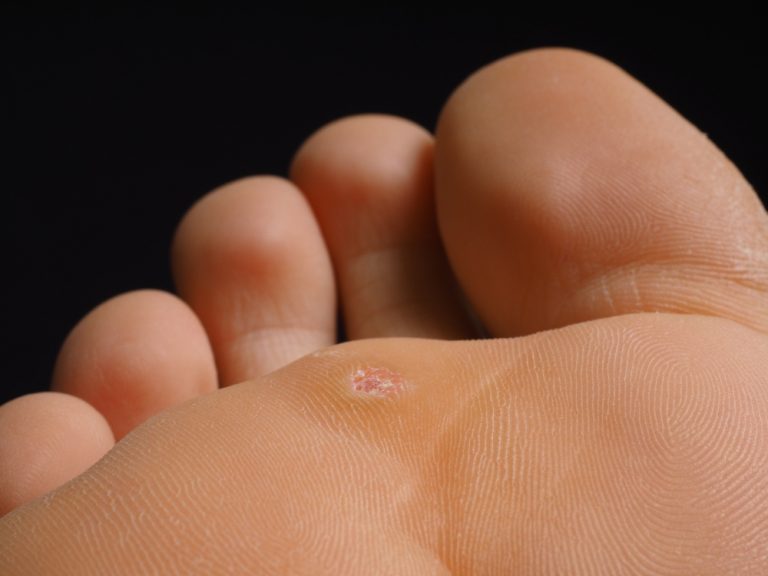 The person should remove the tape after a maximum of 7 days.
The person should remove the tape after a maximum of 7 days.
Once the tape is off, the person must clean the area with soap and water. They can then use an emery board to remove any dead skin from the wart. The person should reapply another piece of tape 12 hours later. People may need to repeat this cycle for 4-6 weeks.
The AAFP note that the effectiveness of using duct tape to remove warts remains unclear. Therefore, doctors may only recommend using this method, along with salicylic acid or other established wart treatments.
Several procedures that may be effective for the treatment of warts are available in-office.
Below are some of the more effective procedures that doctors and dermatologists may use to remove warts.
Cryotherapy
The AAFP explain that cryotherapy is an in-office procedure that uses liquid nitrogen to freeze warts to a temperature of -321°F (-196°C). This damages the various layers of the wart, causing it to shed after three or four cryotherapy treatments. Cryotherapy cures warts in 50–70% of cases.
At-home wart cryogenic devices are available to buy. However, experts are unclear if these OTC products are effective at removing warts since they cannot reach the extremely low surface temperatures that in-office cryotherapy reaches.
Candida and mumps skin antigens
Antigens are substances that cause an immune response in the body. An early pilot study in 2001 showed how injections of Candida or mumps antigen into a wart stimulated an immune response against HPV.
The immune response may occur within the injected wart, as well as other distant warts.
According to the AAFP, people may require injections every 3–4 weeks for a maximum of three treatments.
Photodynamic therapy with aminolevulinic acid
Photodynamic therapy with aminolevulinic acid is a more expensive option for wart removal.
The treatment involves exposing the wart to aminolevulinic acid for 3–8 hours. The acid makes the wart sensitive to light. The dermatologist then targets the wart with a light source, which causes the wart to destabilize and fall off.
The acid makes the wart sensitive to light. The dermatologist then targets the wart with a light source, which causes the wart to destabilize and fall off.
A study in the Journal of Cosmetics, Dermatological Sciences and Applications reported high success rates using this procedure.
Other procedures
Not all procedures for wart removal are equally effective. According to a 2011 review, scientists are yet to determine the effectiveness of the following procedures:
- Intralesional bleomycin: This procedure involves injecting the anti-cancer treatment drug called bleomycin into the wart. Doctors may use this method to treat persistent warts that have not responded to other forms of treatment.
- Pulsed dye laser: This involves directing concentrated beams of light into the wart. The light destroys blood vessels (capillaries) inside the wart but leaves the surrounding skin undamaged.
- Surgical removal using curettage or cautery: A doctor may remove the wart by scooping it out with a rounded loop blade (curettage) or by burning it with a heated instrument (cautery).
Warts may persist for weeks to months. People may have to apply wart treatments several times per day for as long as the wart persists.
People should also be aware that warts commonly recur, regardless of the treatment method a person uses.
After a doctor has diagnosed and treated a wart, they will provide advice on aftercare. This will include information on:
- how to prevent further trauma to the area
- how to prevent transmission of the HPV to other people
Preventive measures a person can take to help reduce their risk of developing further warts include:
- avoiding nail-biting
- wearing proper shoes at the pool-side
- washing hands often to help clear virus from the skin
People usually do not experience any scarring or residual defects after a wart has disappeared.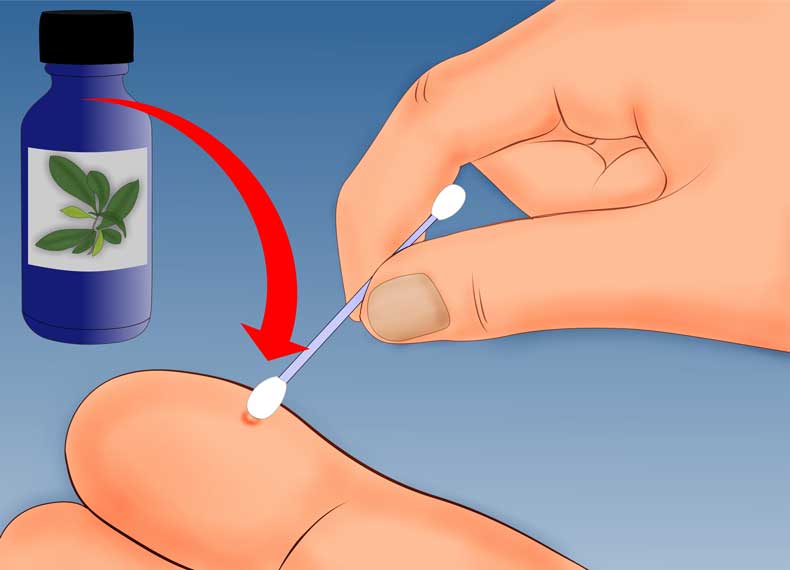
Although there are many treatment options for warts, they can differ significantly in their cost and effectiveness.
Recurrences of warts are very common with each type of treatment. For this reason, it might be sensible to try the least expensive treatments first.
Doctors typically reserve the more expensive treatments for multiple recurrent warts.
Although a person can treat warts using OTC products, people should consult a doctor to get a proper diagnosis. Warts may resemble other skin conditions that may require different management.
People should also see a doctor if they do not see any improvement in finger warts after using 17% salicylic acid for no longer than 12 consecutive weeks.
Will they go away by themselves?
Often, warts will go away spontaneously. As a result, a person’s doctor may recommend watchful waiting to see if the wart resolves without medication.
The American Academy of Dermatology Association (AAD) note that warts are contagious. A person may develop warts as a result of direct or indirect contact with another person’s wart.
Direct contact is where part of a person’s body touches another person’s wart. Indirect contact is where part of a person’s body touches an object that previously came into contact with another person’s wart.
Examples include touching a doorknob that another person has touched, or walking barefoot at a public pool.
A person’s skin provides some degree of protection from HPV. As such, if a person with broken skin comes into contact with HPV, they may be more likely to contract the virus.
Warts on the fingers are a common contagious skin condition caused by HPV. People can get warts on their fingers through direct or indirect contact.
Warts can resolve on their own, but people may request treatment if the wart is uncomfortable, painful, or causes cosmetic concerns.
Several treatments are available, including home remedies and dermatologic procedures. Not all treatment options are equally effective, and all can result in the wart growing back after some time.
Not all treatment options are equally effective, and all can result in the wart growing back after some time.
Although a person can treat warts at home, they should see a doctor for a diagnosis. Warts can resemble other skin conditions that may require different treatment and management.
Warts symptoms & treatments – Illnesses & conditions
Warts usually clear up without treatment. However, it can take up to 2 years for the virus to leave your system and the warts to disappear.
The length of time it takes for a wart to disappear will vary from person to person. They tend to last longer in older children and adults.
In adults and people with a weakened immune system, warts are less likely to clear up on their own or respond well to treatment.
Leaving the wart to go away by itself is one option. However, you may want to consider treatment if your wart is painful, in an awkward position, or is causing you distress or embarrassment.
Your GP should always refer you to a specialist if you need treatment for a wart on your face.
Treatment options
There are a number of treatments available for warts. However, no single treatment is 100% effective, and the wart may return.
The aim of treatment is to remove the wart without it returning and without leaving any scarring.
Treatments include:
- salicylic acid
- cryotherapy
- chemical treatments
Surgery to treat warts is not usually recommended because warts often return and further treatment is required.
Some treatments may cause side effects such as mild pain, blistering and skin irritation around the wart.
These various treatments are described below.
Salicylic acid
Many wart and verruca treatments – including creams, gels, paints and medicated plasters – are available over the counter from pharmacies.
Salicylic acid is the active ingredient in most of these treatments. It has been shown that salicylic acid is as effective as cryotherapy for treating warts.
There is limited evidence available to show which type of salicylic acid treatment (cream, gel, paint or plasters) is most effective.
Salicylic acid and other wart treatments also destroy healthy skin, so it is important to protect your skin before applying the treatment. You can use petroleum jelly or a corn plaster to cover the skin around the wart.
Before applying the treatment to your wart, use an emery board or pumice stone to file it down a little (avoid sharing the board or pumice stone with others). Repeat this about once a week while you are treating your warts.
Each time you treat your wart, soak it in water for about 5 minutes first to soften it, then follow the instructions that come with the medication.
You may need to apply the treatment every day for 12 weeks or longer. You should stop the treatment if your skin becomes sore, and seek advice from your pharmacist.
Don’t use treatments that contain salicylic acid to treat warts on your face. Ask your pharmacist for advice about the best type of treatment.
Consult your pharmacist before using over-the-counter treatments that contain salicylic acid if you have poor circulation – for example, if you have a condition like diabetes or peripheral arterial disease (PAD). This is because there is an increased risk of damage to your skin, nerves and tendons.
Cryotherapy
In cryotherapy, liquid nitrogen is applied to your wart for a few seconds to freeze and destroy the affected skin cells. After treatment, a sore blister will form, followed by a scab, which will fall off 7-10 days later.
A session of cryotherapy usually takes 5-15 minutes and can be painful. Large warts usually need to be frozen a few times before they clear up. You will probably need to wait a few weeks between each treatment.
There are 2 different cryotherapy methods. Liquid nitrogen may be sprayed directly onto the wart, or it may be applied using a stick with cotton wool on the tip. This second method is often preferred for treatment around the eyes or for small children.
This second method is often preferred for treatment around the eyes or for small children.
Cryotherapy may be recommended if you have a wart on your face. This is because the risk of irritation is lower than when using salicylic acid or duct tape.
Cryotherapy is not usually recommended to treat young children because they may find the treatment too painful. It may also be difficult for them to stay in the same position while having the treatment.
If cryotherapy hasn’t been successful within 3 months, further treatments aren’t likely to be effective.
Possible side effects of cryotherapy include:
- pain and blistering
- your skin may become darker (hyperpigmentation) or lighter (hypopigmentation) – particularly if you have black skin
- your nails may develop an abnormal change in shape or structure if cryotherapy is used to treat warts that develop around the nails (periungual warts)
Cryotherapy is sometimes carried out at GP surgeries or at hospital skincare clinics. However, it may not be available on the NHS in all areas of the country.
A very cold spray (dimethyl ether propane) is also available from pharmacies, which you can apply yourself. You should avoid using this spray on your face. Evidence suggests these sprays are not as effective as cryotherapy using liquid nitrogen.
Chemical treatments
Warts can also be treated using chemical treatments available on prescription. The treatments contain chemicals such as:
- formaldehyde
- glutaraldehyde
- silver nitrate
These chemicals are applied to the warts to kill affected skin cells. Potential side effects include the skin being stained brown (with glutaraldehyde) and burns to the surrounding skin (with silver nitrate).
Other Treatments
If the above treatments do not clear warts then other methods may be tried such as:
- light therapy (photodynamic therapy)
- laser therapy
- acupuncture (for flat warts only)
These treatments may not be available on the NHS.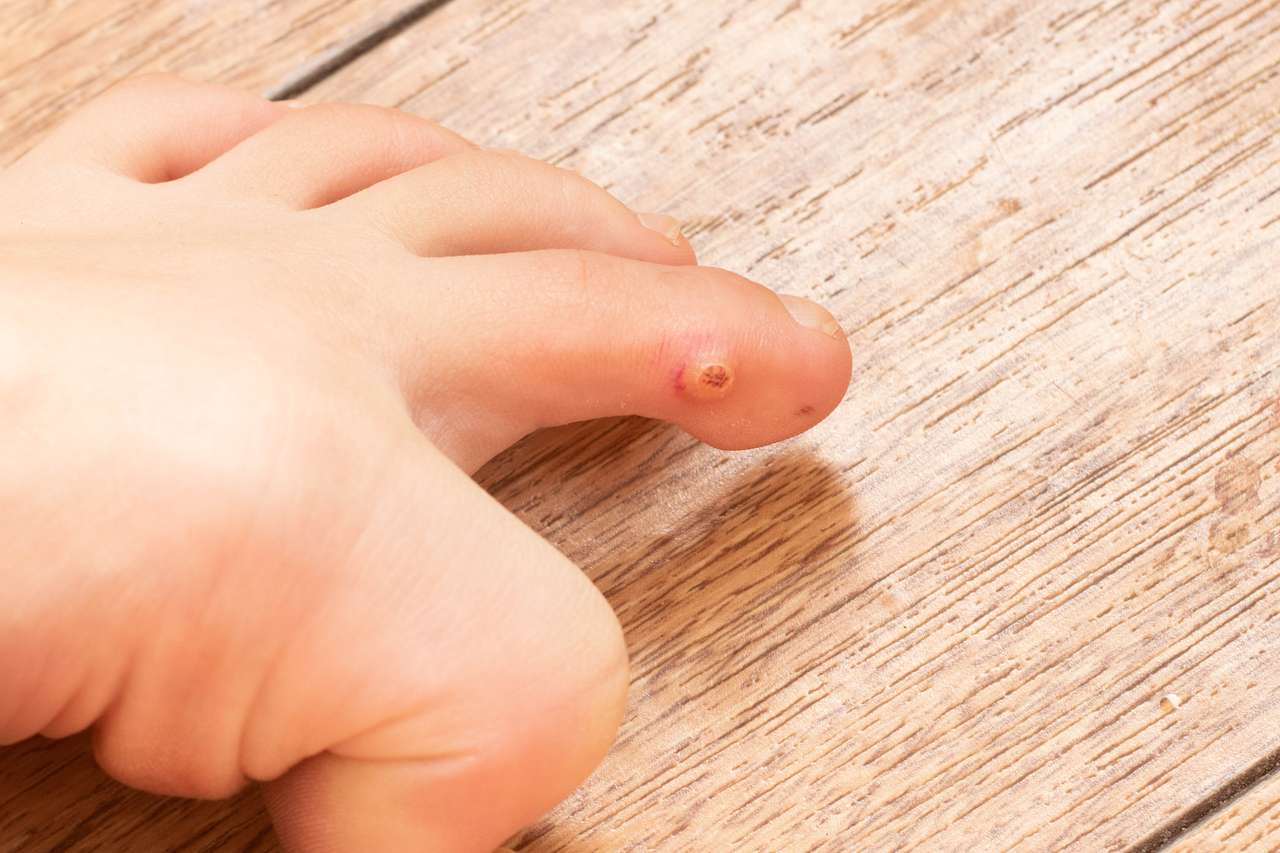
Treating warts during pregnancy
If you are pregnant and have warts, your pharmacist may recommend using salicylic acid, cryotherapy or duct tape.
Salicylic acid can be used to treat warts during pregnancy, as long as it is used on a small area for a limited period of time.
Warts in Children | Johns Hopkins Medicine
What are skin warts in children?
Warts on the skin are harmless growths. They are caused by a virus. Warts can spread to other parts of the body and to other people.
What causes skin warts in a child?
Warts are caused by a type of human papillomavirus. Different types of warts are caused by different types of papillomavirus.
Which children are at risk for warts?
Warts are more common in children than adults, but they can happen at any age. A person is more at risk for warts if he or she has either of these:
What are the symptoms of skin warts in a child?
Warts are usually not painful, except when one is on the bottom of a foot. There are many different types of warts. They each look different. The types of warts and their symptoms include:
Common warts. These usually have a rough surface. They are grayish-yellow or brown in color. They may be on the fingers, elbows, knees, or the face.
Plantar and palmar warts. These grow on the soles of feet or the palms of the hand. Groups of plantar warts are called mosaic. These warts may be painful.
Flat warts. These are small, smooth growths. They most often appear on children’s faces.
Filiform warts. These are small, long, narrow growths. They usually appear on eyelids, lips, or the face or neck.
Periungual warts. These appear as thickened skin around the nails. They can cause painful splits in the skin (fissures).
Plantar Warts
This condition occurs when a virus enters the body through cuts or breaks in the skin and causes non-cancerous growths to build up on the soles of the feet. Plantar warts are not dangerous, but they can be painful and resistant to treatment.
Plantar warts are not dangerous, but they can be painful and resistant to treatment.
How are skin warts diagnosed in a child?
The healthcare provider will give your child a physical exam. A healthcare provider will usually diagnose warts based on their appearance. He or she may use a small blade to scrape away the top layers. There may be black dots beneath the top layers. These are tiny blood vessels that have clotted. Your child’s healthcare provider may recommend that your child see a skin specialist (dermatologist). The dermatologist may do a shave biopsy, although this is not commonly done. A very small amount of the wart is shaved and sent to the lab to be examined.
How are skin warts treated in a child?
Most warts go away in weeks or months with no treatment. Common warts can often be treated with over-the-counter products. Treatment of warts depends on:
How long they have been in place
Where they are on the body
What type of wart they are
How many of them are growing
Some treatment methods may cause pain and burning in the area treated. Talk with your child’s healthcare provider about which treatments would cause the least pain and work best for your child. Treatment may include one or more of the below:
Putting salicylic acid or other medicines on the wart (topical irritants)
Freezing the wart with liquid nitrogen
Applying an electrical current to the wart (electrocautery)
Cutting out (excising) the wart
Removing the wart with laser surgery
What are the possible complications of skin warts in a child?
Warts may be difficult to treat and may return.
What can I do to prevent skin warts in my child?
Warts can spread to other parts of the body and to other people. It can be spread by skin to skin contact. It can be virus may be spread by towels or other personal items.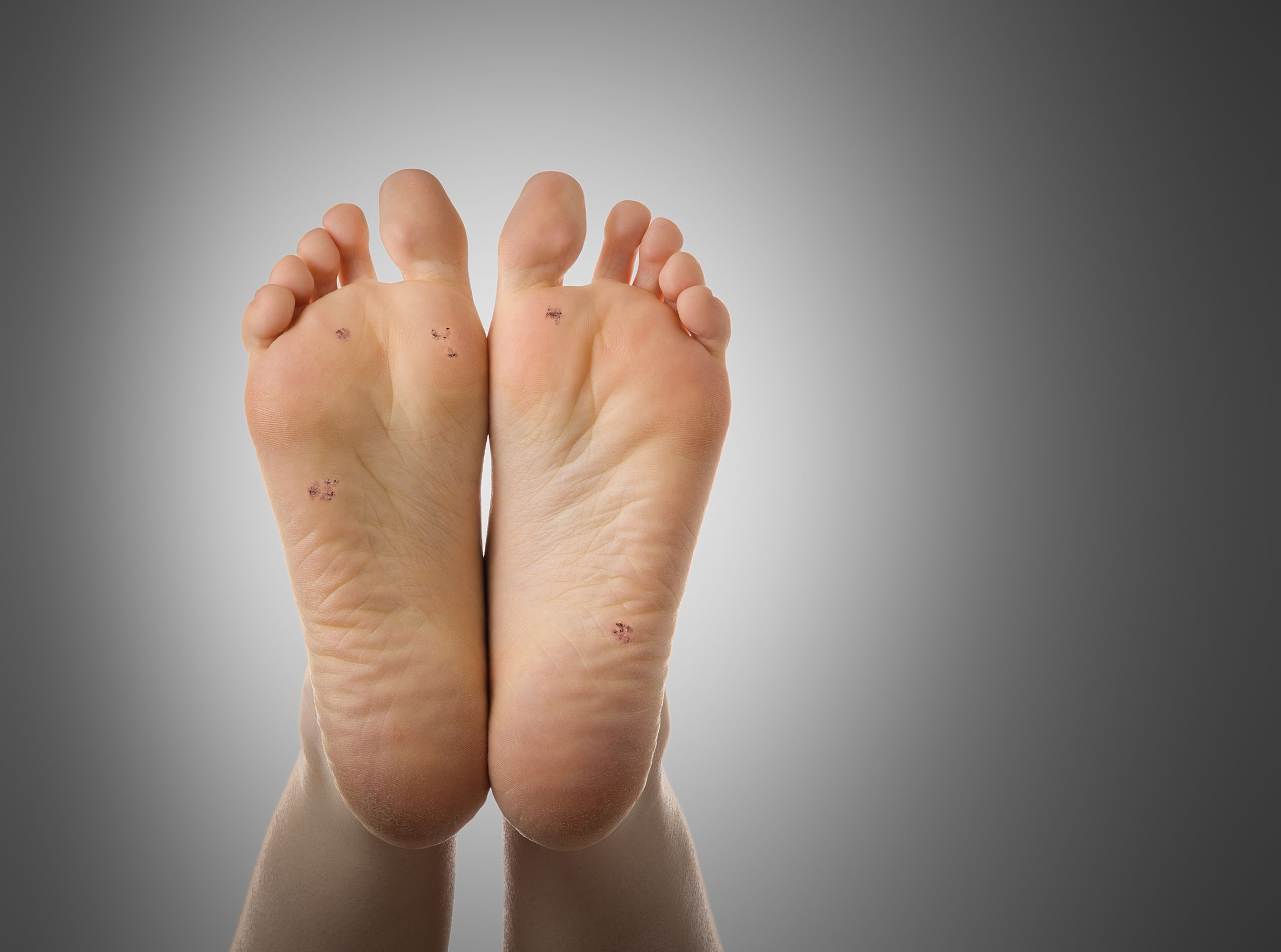 You can help prevent the warts from spreading. Make sure your child:
You can help prevent the warts from spreading. Make sure your child:
Doesn’t touch the wart to other parts of his or her body
Doesn’t touch the wart to other people
Doesn’t share anything that touches his or her wart, such as towels
Wears socks or slippers if he or she has warts on the bottom of the feet
When should I call my child’s healthcare provider?
Call your child’s healthcare provider if your child has warts that:
Key points about skin warts in children
Warts on the skin are harmless growths. They are caused by one of the human papillomaviruses.
Warts are more common in children than adults, although they can develop at any age.
There are many different types of warts with different appearances.
Most warts go away, without treatment, but it may take weeks or months.
Warts can be treated with over-the-counter medicines. Other treatments may be prescribed by your child’s healthcare provider.
Kids Health Information : Warts
Warts are generally harmless skin growths. They are very common, affecting around one in five children. Warts can come up anywhere on the skin or mucous membranes (e.g. the mouth, genitals). However, they are most commonly found on the hands, fingers, feet and face.
Warts can spread to other people, usually due to skin-to-skin contact with another person. Picking or scratching may lead to spreading of warts on the same child. Warts can also be spread indirectly through swimming pools or public showers, especially if your child is barefoot
and they have scratches or cuts. Wearing thongs is recommended in public pools and showers.
Half of all warts will disappear within two years. They can last longer in adults, or people with immune system problems. If the warts are not causing any problems, there is no need to treat them.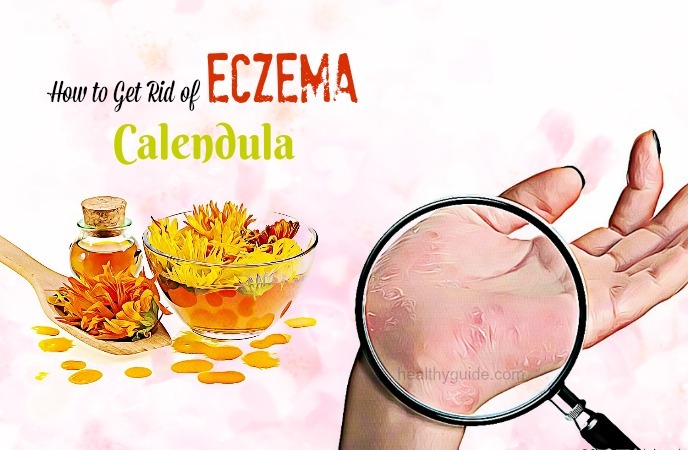
Signs and symptoms of warts
Warts can have many different appearances, from flat, shiny or long stalks to large rough lumps. In some instances, they can be painful, particularly when they are on the feet or under nails.
What causes warts?
Warts are caused by a family of viruses called human papillomavirus (HPV). Once infected with the virus, it may take up to a year or more for the wart to become visible. They then grow very slowly over a period of months to years.
There are many different types of wart virus, and it is possible to become immune to one type, but develop other types of warts. Any immunity is not lifelong.
Genital warts are caused by a different family type of HPV. These are sexually transmitted and can sometimes cause cervical and vulval cancer. Ordinary skin warts do not cause cancer.
Care at home
You don’t need to treat your child’s warts, especially if they are not causing any problems. However, if the warts are causing your child embarrassment or pain, there are treatment options. No single treatment is guaranteed to work, and many require a few
attempts.
- A good initial approach is to keep the warts covered with a strong, waterproof tape (e.g. duct tape) for 24 hours a day. This is simple and low cost, and may help to prevent spreading of the warts.
- Special wart ointments or wart paints that contain salicylic or lactic acid are available from most pharmacies. Ointments can make warts disappear faster and seem to be more effective in treating warts on the hands, compared to the feet.
- Ointments/paints peel away the layers of infected skin and can take up to three months to work. Before using paints, it is important to prepare the skin by soaking the wart in warm water for 10 minutes, then rubbing it with a pumice stone or nail file. The ointment or paint is then
applied to the wart, taking care to avoid the normal surrounding skin. You can use petroleum jelly, such as Vaseline, to protect the skin around the wart. Allow the paint to dry, and then cover the wart with tape or a strong, waterproof sticking plaster.
Allow the paint to dry, and then cover the wart with tape or a strong, waterproof sticking plaster. - Speak to your local pharmacist for advice on suitable wart treatment for your child. Always follow the directions on the packaging for the use of wart treatments, and ask your pharmacist if you have any questions.
When to see a doctor
Make an appointment to see your GP if the warts, or their treatment, cause excessive pain, or if home treatments haven’t worked.
Treatment options available from a GP include:
- liquid nitrogen freezing – a common treatment that is effective, but it can be painful. Of all the studies performed on this topic, liquid nitrogen only seems to be helpful on warts found on the hands.
- your GP can refer your child to a skin specialist (paediatric dermatologist or dermatology nurse practitioner).
- the skin specialist can provide treatments that encourage the immune system to recognise and destroy the skin cells that are infected with the wart virus – these are an option if other treatments do not work or if there are many warts.
- surgery to remove warts is not recommended
Key points to remember
- Warts are common, harmless skin growths caused by a virus.
- Warts can spread between people or on the same person.
- Half of all warts will disappear within two years.
- It is not essential to treat the warts, particularly if they are not causing any problems.
For more information
- See your GP or dermatologist.
Common questions our doctors are asked
Are the wart ointments or paints dangerous to use?
Wart treatments are safe to use on children, but keep in
mind that wart ointment and paints are toxic to warts, and you should take care
not to get them on the surrounding skin. Always follow the instructions on the
packaging. Podophyllin (a wart paint) should not be used in pregnancy. If you
If you
are concerned about possible warts in a child under 12 months of age, have them
seen first by your local doctor.
Can I get the doctor to cut out my child’s wart?
We do not suggest
having warts cut out due to the risk of them coming back, and the high chance
of scarring.
Developed by The Royal Children’s Hospital Dermatology department. We acknowledge the input of RCH consumers and carers.
Reviewed May 2020.
Kids Health Info is supported by The Royal Children’s Hospital Foundation. To donate, visit
www.rchfoundation.org.au.
Types of Warts and How to Treat Them – A Visual Guide
“You can find these benign warts in the vagina, the cervix, around the vulva, and in the anus,” explains Millheiser. They can also appear in the mouth and throat if spread through skin-to-skin contact. Certain strains of HPV can cause cancer, which is why getting any below-the-belt bumps checked out is so important. “There are cancerous lesions that may start as a small wart and then spread,” says Millheiser.
Causes of warts
Long story, short: “We aren’t sure why some people get warts and others don’t,” says Jhin. While it’s not an exact science, are three main risk factors that likely play into your wart risk.
First, your immune system. Since warts are caused by a virus, having a compromised immune system (whether from an inherited condition, medication, or disease like cancer) can make you more susceptible. “There’s no question that people who are immune-compromised will be at risk for all types of infections including warts,” says Brodell. This is likely why kids tend to get warts more often than adults. “Most adults have probably already had warts and developed a specific immunity to them,” Brodell explains.
Breaks in your body’s natural barrier can also make you more likely to get warts. “If someone for instance has dry, cracked skin, it makes sense that it might be easier for the virus to take hold if someone is exposed,” explains Brodell. For that reason, people with skin conditions like eczema might also be partially vulnerable to warts. Finally, there may also be a genetic component, Jhin adds.
For that reason, people with skin conditions like eczema might also be partially vulnerable to warts. Finally, there may also be a genetic component, Jhin adds.
But no matter how susceptible you are to warts, you can’t get them without being exposed, which happens through skin-to-skin exposure. “It could be sexual exposure, shaking hands with someone with warts on their hands, even walking on the floor after someone walked by and left a little piece of the virus behind,” explains Brodell. Anytime you come into direct contact with the presence of HPV anywhere on the body, it’s a risk.
Getty Images
How to get rid of warts
While there’s no cure for HPV (and therefore no way to “cure” your wart), treating them is relatively simple in most cases. “For common warts on the hands and feet, the most common treatment is liquid nitrogen cryotherapy,” says Brodell. “That’s when a doctor sprays the liquid nitrogen on the wart, which freezes it to 192 degrees below zero — it kind of stings and burns and the top of the wart dies, tends to crust up, and finally falls off.”
What Causes Warts? – Podiatrist in Chevy Chase, MD
What Causes Warts?
Got foot warts? Nearly everyone will have a wart at some point in their lives. Warts are typically small, hard skin growths caused by an infection with humanpallilloma virus. Foot warts are treatable. Foot warts are among the most common dermatologic conditions podiatrists treat. Read on to learn about the causes of warts.
An HPV Infection
Common warts are caused by by an HPV infection. Over 100 types of HPV exist. Certain types of HPV infection cause cervical cancer. Some types of HPV infection cause foot warts, while others cause warts that appear on the face, neck, or hands. Of the 100 types of HPV, about 60 cause common warts on areas such as the hands or feet.
Skin-To-Skin Contact
Wart viruses are contagious. You can get foot warts from skin-to-skin contact with people who have warts. However, not all HPV strains are highly contagious. You can get the wart virus by touching an object that another person’s wart touched, such as clothing, towels, shoes, or exercise equipment.
You can get foot warts from skin-to-skin contact with people who have warts. However, not all HPV strains are highly contagious. You can get the wart virus by touching an object that another person’s wart touched, such as clothing, towels, shoes, or exercise equipment.
Breaks in Your Skin
HPV infects the top layer of skin and usually enters the body in an area of damaged or cut skin. Cuts from shaving can provide an avenue for infection. Getting a scrape can also bring on common warts. Foot warts are very common in swimmers whose feet are scratched by rough pool surfaces.
A Weak Immune System
In most cases, your immune system defeats an HPV infection before it creates a wart. Someone with a weakened immune system is more vulnerable and therefore more likely to develop warts. Immune systems can be weakened by HIV or by immunosuppressant drugs used after organ transplants.
If you want to get rid of foot warts, see your podiatrist as soon as possible. Many types of effective wart treatments are available. They include salicylic acid, cantharidin, cryotherapy, laser treatment, and surgery. Your podiatrist can help you get rid of foot warts once and for all!
90,000 Warts – the reasons for the appearance and how to get rid of. Types of warts, their location
Reasons for the appearance and methods of removing warts on the body and hands
Warts are a common occurrence that can be seen anywhere on the body. Few people know that warts are a sign of the presence of the human papillomavirus in the body. No one is immune from this phenomenon, so you need to know the types of warts and where they appear so that you can quickly respond with competent treatment.
Types of warts
Warts are diagnosed more often in childhood and adolescence, but they can also be in adults. In medicine, the following types of warts are distinguished:
- Simple / vulgar.
 The most common type of neoplasm on the skin is diagnosed in 70% of cases in school-aged children. Most often, warts of this type appear on the hands, but they can also be present on the border of the lips and on the neck. Simple warts are distinguished by the presence of one of the largest, “maternal” warts – if it is removed, then even smaller neoplasms disappear.
The most common type of neoplasm on the skin is diagnosed in 70% of cases in school-aged children. Most often, warts of this type appear on the hands, but they can also be present on the border of the lips and on the neck. Simple warts are distinguished by the presence of one of the largest, “maternal” warts – if it is removed, then even smaller neoplasms disappear. - Flat / Youth. They are rare – only up to 4% of diagnosed cases. They are located on the back of the hands, along the border of the lips, on the head of the penis, on the oral mucosa.
- Palmar-plantar. They appear in the places of the most active pressure of uncomfortable shoes. Diagnosis of this type of warts is often difficult, because the specialist must differentiate the neoplasm in question from the corns, calluses.
- Filiform. Differs in a specific appearance – a small “tail” of thin leather, there can be many of them and they are always located “heaped”.Most often found in the armpits, on the neck, under the breast / mammary glands.
Methods for removing warts on the body and hands directly depends on what type of neoplasm is diagnosed in the patient.
It is worth knowing one more feature of warts – they do not have any one exact description of “appearance”. For example, a plantar wart may be a small, rounded lump with a dark center, but a simple wart is a skin growth that has an irregular structure.The easiest way to answer the question “what does a wart look like?” Is if it belongs to a threadlike appearance – an “icicle” appears on the skin, which does not cause pain or irritation. It is noteworthy that frequent rubbing against the wart leads to its inflammation and irritation – it turns red and can cause pain.
How to treat warts on hands and body
Under no circumstances should the warts be torn off or tied with a thread at the base so that they fall off on their own! Such unreasonable behavior can lead to big health problems – for example, the resulting wound can become infected, due to the pulling of the base of the neoplasm, blood flow can be disrupted. How to get rid of warts on the hands of children and adults, what procedures will help to forget about neoplasms on the body and face, a dermatologist or cosmetologist will tell you – you can contact any of these specialists. There are three main methods for getting rid of warts:
How to get rid of warts on the hands of children and adults, what procedures will help to forget about neoplasms on the body and face, a dermatologist or cosmetologist will tell you – you can contact any of these specialists. There are three main methods for getting rid of warts:
- Laser therapy. Usually this method is used to remove warts in the most delicate and painful places, or if the patient wants to avoid scarring. Removing a wart on the face with a laser is the best solution, since this procedure is painless, does not require a long recovery period, and after it is carried out, no scars or scars remain on the skin.
- Cryodestruction. The use of liquid nitrogen is implied, which literally burns out the neoplasm without leaving marks on the skin, although in some cases a small scar is possible. After removing warts with liquid nitrogen, the patient will have to avoid being in direct sunlight; in the future, a small whitish spot may remain at the site of the procedure.
- Drug therapy. It is used in conjunction with the above methods. There are many drugs that have a local effect and contribute to a faster destruction of the wart.The most effective remedy for warts is celandine extract, which is applied pointwise to the neoplasm. You should not use the celandine plant on your own to treat warts – getting on healthy skin, its juice causes severe burns.
Getting rid of the type of neoplasm in question on the skin should be complex. It is not enough to visit a doctor and find out what causes warts on the fingers or face, it is imperative to follow all the appointments and recommendations of a specialist.Even with proper treatment, relapses of the disease are recorded quite often – in 40-50% of cases, warts reappear.
More information about what warts are, which doctor to contact for the treatment of plantar warts and what is meant by the term “general therapy for human papillomavirus” can be obtained on the pages of our website https://www.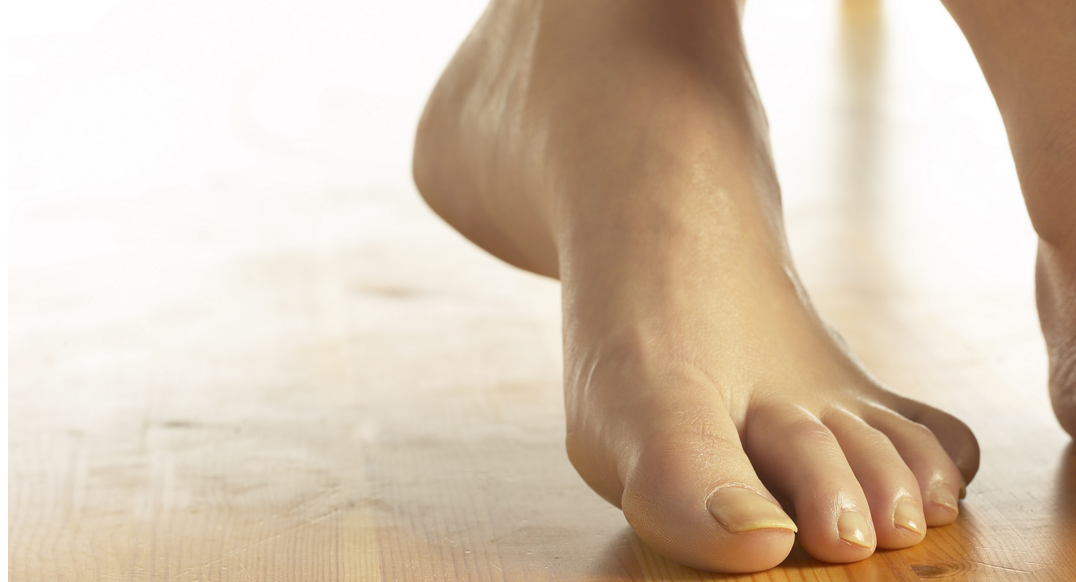 dobrobut.com/.
dobrobut.com/.
Related services:
Consultation with a dermatologist
Dermatovenereology
Viral warts treatment, Human papillomavirus, HPV, Removal of warts
Warts are neoplasms that form under the influence of a virus on any part of the skin.Most often these are:
- Hands;
- The soles of the feet;
- Neck;
- Face;
- Genital mucous membranes;
- The area near the anus.
The cause of their occurrence is HPV (human papillomavirus). More than 100 types of this virus are known to doctors, and a number of them can cause malignant neoplasms.
Therefore, if such growths have arisen, you need to consult a dermatologist.Specialists of the MEDEL Clinic have extensive practical experience in the treatment of warts.
HPV causes of occurrence
The causative agent of the disease can penetrate into the human body in places such as a sauna, SPA-salon, swimming pool. Also, HPV from a person who is a virus carrier to a healthy person can be transmitted by household and sexual routes.
How do warts appear
These neoplasms, hiding under the layer of the epidermis, grow very slowly.Their color does not stand out at first. However, over time, the warts darken to a gray or brown tint.
Usually, neoplasms bring only aesthetic discomfort. However, warts can be painful if, for example, they form on the hands. As a result of injuries, the upper part of the neoplasm is often deformed, becomes wet and bleeds.
Plantar warts are the biggest problem. The growths cut into the dermis, injure the tissues, causing pain when walking.If the infection spreads, the warts will grow larger, making the infected person’s condition worse.
Treatment of warts
In case of viral warts, it is necessary to:
- Strengthen the immune system;
- Destroy the virus;
- Remove skin formation;
- Prevent relapses.

Such areas of treatment are chosen by the dermatologists of the MEDEL Clinic.
The body of a healthy person with good immunity can reject the infection or defeat it quickly enough.This is facilitated by a healthy lifestyle and good nutrition with essential vitamins and minerals.
Conservative methods of treating viral warts are that dermatologists externally apply special medications. They help to soften and slough off the stratum corneum.
Removal of warts
The most effective solution to the problem is to remove the viral warts. In the MEDEL Clinic, this is done using the following procedures:
- Removal of warts with a laser;
- Electrocoagulation;
- Cryodestruction.
Such methods of treatment are selected by a specialist dermatologist individually, taking into account:
- The size of the wart;
- Its location;
- Depths;
- The number of rashes.
The MEDEL Clinic also removes damaged growths that bleed and get wet.
The most effective method of removal is cryotherapy (cryodestruction). Liquid nitrogen squeezes out the contents of the wart, causing tissue necrosis.At this point, a crust forms, which later disappears. Healing is fast enough.
Electrocoagulation is also an effective method. The miniature loop is heated with an electric current and cuts the build-up easily and quickly. When performing the procedure, local anesthesia is applied if necessary.
Laser removal of warts is painless, precise and delicate, without heating the surrounding tissues. One procedure is enough to remove growths of any size.
Terminal
Specialists of the MEDEL Clinic recommend that when warts appear, do not self-medicate, but be sure to make an appointment with a dermatologist. In no case should you delete them yourself, this can make the situation even worse.
Modern technologies used in MEDEL Clinic get rid of viral warts painlessly, effectively and easily. 90,000 Warts appear on the skin: what to do?
90,000 Warts appear on the skin: what to do?
Most often, warts are found in young people and children.Patients with chronic skin conditions (eg, psoriasis, atopic dermatitis, eczema) and those with a weakened immune system (eg, after organ transplants or HIV infection) are much more difficult to treat and are much more common.
Common warts can be found all over the body, but are more common on the fingers, around the nails, and on the elbows, hands and knees.
Warts, called flat warts, form on the back of the forearms and hands, as well as on the feet, legs and face.
The diagnosis is made by a physician upon examination.
The way to remove warts can be different. Sometimes warts go away on their own after 2-3 years. But usually untreated warts increase in number and size, so it is recommended to remove these formations.
Which method of treatment is more suitable – the attending physician decides. Most of these methods give a noticeable effect within a few weeks, and sometimes even after a few months. After removal of the warts, a relapse can always occur.
Warts can be removed surgically, that is, the wart is removed with a scalpel or blade using skin anesthesia.
There are also chemical disposal methods.
Liquid nitrogen is a very cold liquid that freezes the warts and thus destroys them. This method is called cryodestruction or cryotherapy. Such treatment can only be carried out by a doctor, in most cases it is necessary to carry out several sessions in a row. Liquid nitrogen treatment is prescribed for adults or adolescents, but is not recommended for young children because it sometimes causes severe pain.Local anesthesia is used to relieve pain before the procedure.
Another remedy for warts is a cream with 5-fluoroacil, which is used to combat flat warts. The cream is applied for 3-5 days twice a day. Photoprotective agents should be used during treatment, as the sun can irritate the skin.
When should I see a doctor?
See a doctor if wart:
- causes pain
- bleeds easily
- changes the look
- spreads easily to other parts of the body
- recurs after previous removal
- appears in an area where it is often injured, for example, when shaving, playing sports, etc.d.
To reduce the risk of contracting or spreading warts:
- Do not touch the warts.
- Do not use other people’s towels, washcloths and other personal items.
- Do not share shoes or socks with other people.
- Do not brush the warts as this could spread them.
- Wear sandals when entering and exiting public showers and swimming pools.
- Cover warts with waterproof tape when swimming, and use socks or gloves in other public places such as the gym.
- Do not brush, shave or cut hair in areas with warts.
- When using a nail file or scissors, do not use the same tool on the affected and healthy nail.
- Do not bite your nails if there are warts around them.
- Keep your hands as dry as possible.
- Wash your hands thoroughly after touching a wart.
- common, or vulgar: such warts are usually located on the hands, but this localization is not necessary; in appearance they are thicker and darker than the surrounding skin;
- flat: small, colored in skin tone, appear in large numbers on the face, neck, knees, wrists, usually in children;
- Plantar wart, or “spine”: painful growth on the foot, growing into the skin;
- filamentous papillomas: similar to miniature hairs from the skin, appear around the mouth, nose, eyes;
- Periungual: Forms clusters on the surface of the skin near the fingernails;
- genital genital warts: a fairly contagious form that is transmitted through sexual intercourse; warts grow around the genitals and anus, there is a connection between their appearance and the development of cervical cancer.
- compresses from raw grated potatoes;
- castor oil;
- cut onions;
- dandelion juice;
- mixture of water and rubbed white chalk.
- on face and other sensitive skin areas;
- on the legs with diabetes;
- for painful or bleeding wart.
- Washing hands with soap after returning home;
- Thorough washing of feet after visiting the beach, bathhouse, pool;
- Balanced nutritious food, normal sleep;
- refusal of close contact with people with warts;
- Use of orthopedic insoles and shoes made of natural material.
- Ordinary. They are difficult to replace because they are flesh-colored.Dome-shaped lesions are found on the fingers and the back of the palms, especially around the nail plate. There may be a small black dot inside the common wart that resembles a seed. These are the blood vessels from which the thrombus has formed.
- Plantar. They appear on the soles of the feet, usually on weight-bearing areas such as the heels, and grow into the skin due to pressure from walking and standing. If these growths on the legs appear in clusters, they are called mosaic.Mosaic warts are hard, thick, and flat. They can be similar and mistaken for calluses.
- Flat. In women, it can appear on the legs. In men, in the beard area. Children can also suffer from these warts.
- Threaded. They grow very quickly and have a prickly appearance. The small projections that protrude from these warts look like filaments, finger-like projections, or even brushes. Filamentous growths can be brown, yellow, pink, or flesh-colored.
- Genital warts are another species and the most dangerous. Genital warts are spread through sexual contact with someone who already has them. Warts can be on the outside of the genitals. Certain types that cause cancer cause lesions to grow on the woman’s cervix. Genital warts look like flesh-colored bumps that look like cauliflower.
- With increased perspiration, the step should be to wear shoes made of natural materials and use special aids to maintain the safety.
- If the skin on the feet is dry and prone to crunching, then it is imperative to use nourishing and softening agents.
- Carefully dedicate swimming pools or shared showers, in the first place, do not walk barefoot on the tiles, do not take off your slippers.
- In case of cuts or scratches on the hands or feet, it is imperative to treat the wounds with an antiseptic (hydrogen peroxide, brilliant green, etc.).
- Cover minor injuries and scratches on the skin of exposed areas of the body with a plaster. They can be the gateway for human papillomavirus.
- You need to normalize your diet. Try to eat foods rich in vitamins.
90,063 90,000 causes, symptoms, treatment and prevention
Contents
One of the most common skin problems in children and adults is warts.These are superficial growths of the upper skin layers, which are usually harmless. However, some dangerous skin diseases also manifest similar symptoms, so when warts appear, you should definitely contact a dermatologist for diagnosis.
General information
Such formations can have different shapes and sizes. They often appear on knees, elbows, fingers; It is not uncommon to see warts on the face and scalp.
These benign neoplasms do not change their appearance for a long time, but they can spontaneously disappear without treatment and just as suddenly reappear.
Warts cause aesthetic discomfort. In addition, they can be permanently injured by shaving, clothing, or a comb. This increases the risk of inflammation and bleeding.
To learn how to get rid of warts, you must first determine their type. It is difficult to do this on your own, so you will need the help of a doctor.
Causes of warts
Causes of warts on the hands and other parts of the body – a viral infection in combination with micro-damage to the skin.The disease is caused by a type of human papillomavirus. Infection occurs by contact, the pathogen penetrates through microscopic wounds or cracks in the skin and causes overgrowth of skin tissues.
An additional factor contributing to the development of pathology is immunodeficiency, which can develop in connection with poor nutrition, old age, diabetes, prolonged use of drugs that suppress the immune system.
Types and symptoms of warts
There are such types of warts:
Causes and treatment of warts on the hands and other parts of the body require evaluation and treatment by a qualified dermatologist.
Treatment of warts
Removal of warts helps to eliminate the cosmetic imperfection, as well as to prevent their damage. It is carried out using different methods.
For a large number of lesions, the dermatologist will advise an effective external remedy for papillomas and warts. Patches, creams, talkers, pastes, and other dosage forms can be used.Often, wart ointment contains salicylic acid, which softens skin lesions.
A more radical treatment for warts is their removal with liquid nitrogen, cauterization with electric shock or a surgical scalpel.
Any home remedy for warts can be tried for the procedure for removing a small mass, for example:
These funds cannot be used:
Prevention
Since it is almost impossible to avoid contact with the papilloma virus throughout life, in order to prevent warts, measures must be taken to strengthen the immune system and maintain cleanliness and health of the skin:
Treatment in the clinic “Mom Dad I”
The Mama Papa Ya family clinic network invites everyone to quickly and painlessly remove warts using modern equipment. The branches of the clinic are located in different districts of Moscow; qualified dermatologists at an affordable price conduct appointments here.
We offer services for the elimination of warts in various ways for patients of different ages. To make an appointment for a consultation, call the nearest branch or leave a request on our website.
Reviews
Marina Petrovna
The doctor examined my husband carefully, prescribed an ECG and made a preliminary diagnosis. She gave recommendations on our situation and ordered an additional examination. There are no comments yet. Financial agreements have been complied with.
Roach Efim Borisovich
I am just delighted with the doctor and the clinic. I haven’t had any pleasure in clinics for a long time. Everything went perfectly in terms of logistics, strictly in time.I also enjoyed aesthetic pleasure both as a patient and as a person. I could communicate and this communication gave me great pleasure. Lowest bow to the ultrasound doctor.
Luzina Sofya Khamitovna
I liked Dr. Vlasova very much. Nice and nice woman, good specialist. I received an answer to all my questions, the doctor gave me a lot of good advice. I was more than satisfied with the visit.
Evgeniya
Visited the Mama Papa Ya Clinic with the child.I needed a consultation with a pediatric cardiologist. I liked the clinic. Good service, doctors. We didn’t stand in line, the cost was the same.
Olga
I liked the clinic very much. Courteous staff. Was at the reception of the gynecologist Mikhailova E.A. I was satisfied, there are more such doctors. Thank you!!!
Anonymous user
I removed the wen from Alina Sergeevna, the operation was great! Many thanks to her for her sensitive attention and approach to every little thing.
Anonymous user
Today I was served in the clinic, I was satisfied with the staff, as well as with the gynecologist. Everyone treats patients with respect and attention. Thank them very much and further prosperity.
Irat’ev V.V.
The Mama Papa Ya clinic in Lyubertsy is very good. The team is friendly and helpful. I recommend this clinic to all my friends. Thanks to all doctors and administrators. I wish the clinic prosperity and many adequate clients.
Belova E.M.
Today I removed a mole on the face at the dermatologist Kodareva I.A. The doctor is very neat! Correct! Thank you so much! Administrator Borshchevskaya Julia is benevolent, clearly fulfills her duties.
Anonymous user
I would like to express my gratitude to the clinic workers Mom, Dad, me. The clinic has a very friendly atmosphere, a very friendly and cheerful team and highly qualified specialists.Thank you very much! I wish your clinic prosperity.
Christina
I liked the first visit. They examined me carefully, prescribed additional examinations, and gave me good recommendations. I will continue the treatment further, I liked the conditions at the clinic.
Anna
Good clinic, good doctor! Raisa Vasilievna can clearly and easily explain what the essence of the problem is. If something is wrong, she speaks about everything directly, not covertly, as other doctors sometimes do.I do not regret that I got to her.
Recommended Reading:
90,000 Types of warts and how to remove them
Warts are benign skin lesions that can form anywhere on the body in people with HPV infection. There are many types of warts triggered by this virus, some of them develop into malignant if not removed promptly.
The growth is common, can occur on the arms, legs, genitals, face and back.The formation of warts on the abdomen and the inner side of the palm is the smallest percentage.
How the virus spreads and types of warts
The most common mode of transmission is contact with HPV-infected skin. Human papillomavirus can be spread through shared items such as razors and towels. It multiplies rapidly in warm, humid environments.
Types of warts:
How to get rid of warts
Warts often go away on their own. Treatment depends on the type of wart, the patient’s age and health status.Sometimes, warts, including those caused by HPV infection, disappear and later recur.
We recommend that you consult a doctor in any case, since self-treatment can lead to disappointing results. Turning to PrivatKlinik you get a doctor’s consultation and a 100% method of solving your problem, a cosmetologist or a surgeon will help you in the medical center.
Cryotherapy is a procedure that doctors use to freeze common warts using liquid nitrogen.The procedure is suitable for older children and adults. Because it can be a little painful, cryotherapy is not done on young children. It may take several cryotherapy sessions to effectively freeze the warts. Freezing with liquid nitrogen works best when combined with other treatments.
Cantharidin is an over-the-counter warts treatment that is applied to the wart to stimulate blistering. After about a week, the blister dries up and falls off, taking the wart with it.Cantharidin is a good treatment for warts in children because the drug is painless. People receiving topical treatments may experience tingling, burning, swelling, or itching in the area several hours after application.
Certain warts, especially filiform warts, plantar warts and common warts, can be treated by cutting and / or burning them. The official name for this type of treatment is electrosurgery (burning) and curettage (scraping).These two procedures are often used together. The doctor will freeze the area to be treated. Then he uses an electric tool to burn the wart off. Laser treatment is sometimes used. Curettage involves using a knife or spoon to scrape off the wart.
Prevention of viral warts – SPb GBUZ Dermatovenerologic dispensary No. 11
28.02.2019. at 14.00 in St. Petersburg GBUZ KVD No. 11 in the department at st. Tchaikovsky house 1, the specialists of the dispensary held a conference for patients and dispensary staff on the topic “Viral warts.What provokes their occurrence. Symptoms, prevention. How to get rid of. ”
The conference was attended by 17 medical personnel of the dispensary and 6 patients of the Central District.
Doctor-dermatovenerologist of St. Petersburg GBUZ KVD No. 11 Kovalchuk A.K., in his report spoke in detail about the main reason for the appearance of warts – this is the Human Papilloma Virus, which affects the upper layers of the epidermis. It can be transmitted by household or contact, but the easiest way for it to enter the body is through damaged skin.
In his speech, the speaker emphasized that when warts appear on any part of the body, it is necessary to consult a dermatovenerologist. Improper treatment of such warts can lead to their malignant transformation.
A discussion of the main methods of treatment and removal of warts took place, the main of which, today, are:
– cryotherapy – freezing a wart with liquid nitrogen;
– chemotherapy – burning of a wart by applying chemicals;
– laser therapy – burning of a wart with a laser beam.
The method is chosen by a specialist doctor depending on the location and type of the wart.
But everyone knows that it is easier to prevent a disease than to cure it later. In order to protect yourself at least a little from a viral infection and reduce the risks of warts on the body, doctors advise first of all to lead a healthy lifestyle. It is necessary to constantly competently maintain the immune system, which loses its protective functions due to constant nervous strain, lack of sleep, malnutrition and even a lack of vitamins.
Basic methods of preventing the appearance of viral warts:
– Refuse casual sex. It is advisable to have one permanent and healthy partner.
– Adhere to the rules of personal hygiene. Don’t use someone else’s towel.
– When visiting the pools and baths, you must wear an individual rubber shoe and not use someone else’s.
– It is also important to eat right, lead an active lifestyle, get rid of bad habits, get enough sleep, be less nervous, because all these factors negatively affect the immune system.
– It is necessary to make a pedicure regularly, to carry out the procedure, you should use sterile (and ideally – individual) tools.
90,000 How to get rid of warts or papillomas
Warts and papillomas can appear on the body of any person.The causative agent of this disease is the human papillomavirus. It is difficult for a virus to get into a healthy body, therefore, in addition to meeting the requirements of personal hygiene, close attention should be paid to the state of immunity.
If no action is taken to treat warts and papillomas, they begin to grow in size, grow, and form whole colonies. They can appear in different places: on the neck, shoulders, arms, legs, even genitals.For some people, warts and papillomas bring great inconvenience, being located in the most prominent places. How do you get rid of them?
Treatment
It should be said right away that in order to get rid of these formations forever, simply removing them will not be enough. If the immune system remains weak, the virus will return. Therefore, it is necessary to undergo a course of treatment aimed at strengthening the immune system. There are many types of papillomas, and only a doctor can choose an effective drug after a proper examination.You can read more about effective remedies here.
At the moment in pharmacies you can find many different products for the removal of warts and papillomas. Which one is the best is impossible to determine. For some, one drug will be effective, for others it will not have any effect. Therefore, the appointment is made by the doctor, based on the results of diagnostics, the general health of the patient, the presence of concomitant diseases. There are several methods of getting rid of neoplasms:
• mechanical method;
• drug treatment;
• treatment with herbal preparations.
Mechanical method involves treatment with electric current and high temperature (electrocoagulation), with liquid nitrogen (cryotherapy), or with laser beams (laser therapy).
Drug treatment can be divided into the following groups:
• Tablets. Since infection with a virus occurs due to a decrease in immunity, the action of these funds is aimed at increasing the protective properties of the body. That is, immunomodulatory agents, antiviral drugs, vitamin preparations.Sometimes, after taking these remedies, warts and papillomas disappear on their own, without the use of other drugs.
2. Preparations for local treatment:
• creams and ointments with antiviral effect: viferon, oxolinic ointment, imiquimod cream and others;
• antiviral gels that stimulate the production of interferon. For example, Panavir gel, which destroys the root of the formation;
• solutions that are oily, alkaline, acidic. They have cauterizing properties; these remedies are usually not used to remove warts in children.These are drugs such as Feresol, Kollomak, iodine, etc.;
• plasters, one of the most popular of which is salipod, the active ingredient of which is salicylic acid;
• a pencil based on lapis with a cauterizing effect. It is not used to remove growths on the face, because it leaves scars.
3. Treatment with herbal preparations is popular due to the naturalness of their composition, the absence of side effects. Among them are the following:
• Papilight, which contains only natural active ingredients such as extract of garlic, red pepper, propolis, Jerusalem artichoke juice and many other ingredients, the action of which is aimed at removing growths and strengthening the immune system.

 These preventative measures include: cover your wart to keep the virus from spreading, don’t pick at your wart, keep your hands and feet clean and dry, don’t bite your nails, wash your hands regularly, wear shoes when in public showers or pools, and use protection during sexual activity.
These preventative measures include: cover your wart to keep the virus from spreading, don’t pick at your wart, keep your hands and feet clean and dry, don’t bite your nails, wash your hands regularly, wear shoes when in public showers or pools, and use protection during sexual activity. Allow the paint to dry, and then cover the wart with tape or a strong, waterproof sticking plaster.
Allow the paint to dry, and then cover the wart with tape or a strong, waterproof sticking plaster. The most common type of neoplasm on the skin is diagnosed in 70% of cases in school-aged children. Most often, warts of this type appear on the hands, but they can also be present on the border of the lips and on the neck. Simple warts are distinguished by the presence of one of the largest, “maternal” warts – if it is removed, then even smaller neoplasms disappear.
The most common type of neoplasm on the skin is diagnosed in 70% of cases in school-aged children. Most often, warts of this type appear on the hands, but they can also be present on the border of the lips and on the neck. Simple warts are distinguished by the presence of one of the largest, “maternal” warts – if it is removed, then even smaller neoplasms disappear.